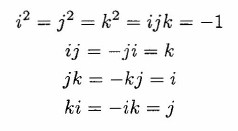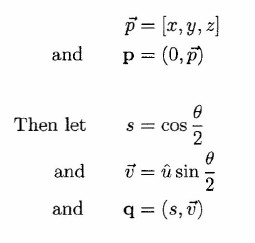Exercise 6.10
- What is the difference between a class and an object?
- What is the difference between the declaration of a class field and the
declaration of an instance field?
- What is the difference between a call to a class method and a call to
an instance method?
- Suppose that a complex number z = a-s-bi is represented by an object
of the form shown in the diagram

Write a definition for a class Complex that contains
- private double fields re and im for the real and imaginary
parts of a number,
- a constructor method that could be called by the statement
Complex z = new Complex(2.7,-1.1);
to create an object that represents the complex number 2.7 - l.li,
- a constructor method with no parameters that creates a Complex
object representing the number 0,
- an instance method that finds the modulus of a complex number,
- an accessor method that returns the value of the real part of a
complex number.
- Suppose that the following fragment is part of a method in the
Complex class developed in the previous question. Draw diagrams
to illustrate the result of executing the fragment.
Complex z1, z2, z3;
z1 = new Complex(2,-2);
z2 = new Complex();
z3 = z1;
z2.re = z3.im + 3;
z2.im = 2*zl.im;
z3.im = z1.re / 2;
- Write an instance method harmonicSum for the Fraction class discussed
throughout this chapter. The method should have one int
parameter, n. It should set its implicit parameter to the value of the
fraction found by adding the terms of the harmonic series

The fraction should be reduced to lowest terms. If n < 1, then the
fraction should be set to  . .
- Write a class Lock that could be used to create electronic lock objects.
Each lock may be in either an open (unlocked) or a closed (locked)
state and each one is protected by its own integer key which must be
used to unlock it. The class should contain the following methods.
The following main method illustrates how the Lock class should work.
public static void main (String[] args)
{
Lock lockl = new Lock(111);
Lock lock2 = new Lock(222);
lock1.close();
lock2.close();
System.out.println(lock1.isOpen()); // prints false
lockl.open(123); // fails to open lockl
lockl.open(456); // fails to open lockl
lock2.open(222); // opens lock2
lockl.open(789); // fails - prints ALARM
lock1.open(111); // opens lock1
}
Projects
- Suppose that rectangles in a Cartesian plane are represented by a
class Rectangle that has four private fields as shown:
class Rectangle
{
private int left; // x-coordinate of left edge
private int bottom; // y-coordinate of bottom edge
private int width; // width of rectangle
private int height // height of rectangle
- Write a constructor method that has four parameters representing
the four fields of the class. The constructor should replace
any negative length parameters with zero.
- Write a toString method for the Rectangle class. For the rectangle
with lower left corner located at (3,2) and having width 4
and height 5, the method should return "base:(3,2) w:4 h:5".
- Write an instance method, area, that returns the area of a rectangle.
- Write an instance method, perimeter, that returns the perimeter
of a rectangle.
- Write a class method, intersection, that has two Rectangle
parameters. The method should return the rectangle formed by
the area common to the two rectangles. If they do not intersect,
the method should return the rectangle whose instance fields
are all zero. If the rectangles touch, the method should return
a "rectangle" of zero width or zero length.
- Write a class method, totalPerimeter, that has two Rectangle
parameters. The method should return the total perimeter of
the figure formed by the two rectangles. It should only count as
part of the perimeter those portions of the edges of a rectangle
that are on the exterior of the resulting figure. If one rectangle
is completely contained by the other, then the method should return the perimeter of the outer rectangle. If the rectangles
do not intersect, then the method should return the sum of the
individual perimeters.
- Write an instance method, contains, that has one explicit parameter
of type Rectangle. The method should return true
if every point of the rectangle determined by the explicit parameter
is on or within the rectangle determined by the implicit
parameter. It should return false otherwise.
- Java provides a class BigInteger in the package java.math that
allows us to perform arithmetic on integers that are arbitrarily large.
The class includes the following features (plus many others):
- Two class fields contain the Biglnteger representations of zeroand one.
public static final Biglnteger ZERO
public static final Biglnteger ONE
- There is a constructor that creates a Biglnteger from a given
string. It has the header
public Biglnteger (String s)
The string s consists of a sequence of one or more decimal digits
that may be preceded by an optional minus sign. No other
characters are permitted.
- Instance methods for performing arithmetic include the following:
public Biglnteger add (Biglnteger other)
public Biglnteger subtract (Biglnteger other)
public Biglnteger multiply (Biglnteger other)
public Biglnteger divide (Biglnteger other)
public Biglnteger remainder (Biglnteger other)
public Biglnteger gcd (Biglnteger other)
In each case, the method whose identifier is <op> returns a
Biglnteger whose value is this <op> other. The method gcd
returns the greatest common divisor of this and other.
- A method compareTo compares two Biglnteger values. The
method has header
public int compareTo (Biglnteger other)
The method returns -1, 0, or 1depending on whether the implicit
Biglnteger object is less than, equal to, or greater than other. It can be used to implement any of the six relational
operators (<, <=, >, >=, ==, or !=) by writing expressions of the form
a.compareTo(b) <op> 0
- A toString method returns a string representation of a BigInteger value. The method has the header
public String toString ()
- An equals method tests two BigInteger objects for equality.
The method has the header
public boolean equals (Biglnteger other)
Use the BigInteger class to create a BigFraction class. The class
should contain features that parallel those in the Fraction class of
Section 6.8 (Putting the Pieces Together). Write a main method, in
another class, that tests your BigFraction class thoroughly.
-
In 1843 William Rowan Hamilton extended the notion of a complex
number to that of a quaternion. Complex numbers contain the value
i with the property that i^2 = -1 while quaternions contain values i,
j, and k with the following properties:

Just as a complex number z can be written in the form z = a + bi
where a, b ∈ R, a quaternion q can be written in the form q = w +
xi + yj + zk where w, x, y, z ∈ R. We can also represent a quaternion
as an ordered quadruple-of real numbers [w,x,y,z]. Sometimes it is
useful to represent a quaternion as a combination of a scalar s = w
and a vector v = [x, y, z]. Thus, the following are all equivalent:

We will be interested in a number of operations involving quaternions.
-
Addition
Given two quaternions

their sum is:

-
Multiplication
The product of quaternions q1 and q2 is:

where V1.V2 (the dot product) and V1xV2 (the vector product)
are defined as follows:

-
Scalar Multiplication
A quaternion q can be multiplied by a real number to give a
quaternion result. If c ∈ R and q = w + xi + yj + zk, then

-
Conjugation
If q = w + xi + yj + zk, then the conjugate of q is

- Finding Magnitude
The size or magnitude of a quaternion q is

-
Inversion
The inverse of a quaternion q is

Quaternions are useful in computer graphics for the representation
and calculation of rotations of graphical objects. Suppose that we
are given a point P = (x, y, z) and we want to determine its image
P' after a rotation through an angle Θ about a direction defined by
a unit vector u. We first obtain a quaternion representation of the
point P by letting

If we now find the product

this product will have the form

where the components of p' are the coordinates of the image P' of
the original point P.
You are to create two classes in two different files. In a file called
Vector3.java, you should create fields and methods to implement
three-dimensional vectors. This class should begin with the following
field definitions:
class Vector3
{
private double x;
private double y;
private double z;
..
}
You must also write a number of methods for the class. These should
include (but are not limited to) the following:
- A constructor with three double parameters representing the
fields x, y, and z.
- A toString method that, for a vector with components x, y,
and z, returns a string of the form:
"[x,y,z]"
- Accessor methods getX, getY, and getZ that return the values
of x, y, and z respectively.
- An instance method dotTimes with one explicit parameter of
type Vector3. The method should return the value of the dot
product of its implicit and explicit parameters.
- An instance method vecTimes with one explicit parameter of
type Vector3. The method should return the value of the vector
product of its implicit and explicit parameters (in that order).
- An instance method scaleTimes that has one double parameter.
The method should return a vector that is the result of
multiplying the double parameter by the implicit vector object.
- An instance method unit with no explicit parameters. The
method should return a normalized (unit) vector that has the
same direction as the implicit parameter. If the parameter represents
the zero vector, the method should return the zero vector.
In a separate file, called Quaternion.java, you are to create a class
to implement quaternions. This class should begin with the following
field definitions:
class Quaternion
{
private double y;
private double x;
private double y;
private double z;
..
}
You are to write the following constructors and methods to be added
to the class:
- A constructor method that has four parameters representing the
fields w, x, y, and z.
- A constructor that has two parameters: a double value representing
the scalar part of a quaternion and a Vector3 object
representing the vector part.
- A constructor with no parameters that creates an instance of a
unit quaternion, with a scalar of one and vector components all
set to zero.
- A toString method that returns a string containing the object's
components as a scalar, s, and a vector, v. For the quaternion
q = [3.23,2,-0.625,3.56], the method would return the string
"s: 3.23 v: [2.0,-0.625,3.56]"
- An instance method conjugate that returns the conjugate of
its implicit parameter.
- An instance method magnitude that returns the magnitude of
a quaternion.
- An instance method times that returns a Quaternion object
which is the product of the implicit object times the explicit
object (in that order).
- An instance method inverse that returns the inverse of its implicit
parameter.
- An instance method getVector that returns, as a Vector3 object,
the vector portion of its implicit quaternion object.
- A class method image that finds the image P' of a point P under
a rotation. The header of the method is
public static Vector3 image (Vector3 p, Vector3 u, double theta)
Here p is a vector whose components are the coordinates of the
point P, u is a vector giving the direction of the axis of the
rotation, and theta is the angle, in radians, through which the
rotation is to take place. The vector returned by the method
has components that are the coordinates of the image point P'.
You should create your own main method to test your classes thoroughly.
|
|